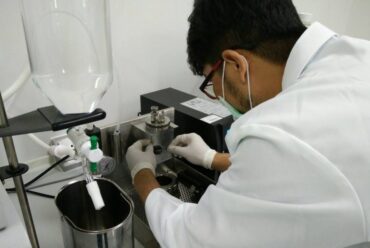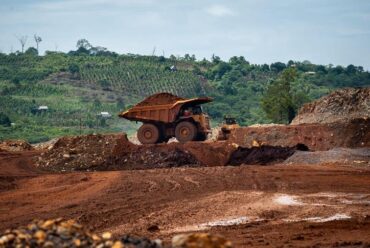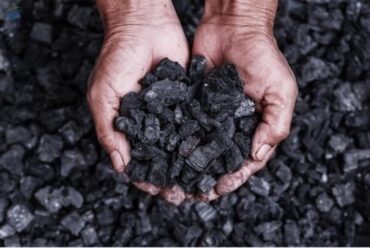Biomass Conversion and Biorefinery Which Can Help People in Various Fields
The use of technology in a developing era like today is beneficial for the broader community in various regions around the world. One of the focuses of the researchers at this time is the development of biomass conversion and biorefinery so that everyone can apply it in every aspect of life.
The Definition of Biomass Conversion Process
Biomass is a type of sustainable biological material derived from plants and animals. Until the mid-1800s, biomass was the primary source of total yearly energy consumption in the United States. Biomass is a significant fuel in many countries, particularly in underdeveloped countries for cooking and heating.
Many developed countries are boosting their use of biomass fuels for electricity and transportation generation in order to reduce carbon dioxide emissions from fossil fuel consumption. Sun-generated chemical energy is stored in biomass. Photosynthesis is the process by which plants make biomass.
biomass conversion and biorefinery could be produced by burning to generate heat or transformed into renewable gaseous and liquid fuels via a variety of processes. To produce renewable natural gas, it requires biological conversion to change several important components.
Biorefinery is a cutting-edge technology that plays a vital role in the sustainable utilization of biomass resources. It serves as a multifaceted processing facility designed to transform various types of biomass, such as agricultural residues, forestry by-products, and organic waste, into a wide range of valuable products. Unlike traditional refineries that primarily focus on crude oil processing, biorefineries harness the potential of renewable biomass to produce a diverse array of bio-based fuels, chemicals, and materials.
The core concept behind biorefineries lies in the efficient utilization of every component of the biomass feedstock. Through a series of interconnected processes, the biomass undergoes conversion into different intermediates, which are then further refined into end products. This cascading approach ensures that no part of the biomass goes to waste, maximizing resource efficiency and sustainability.
The biorefinery process can be broadly categorized into three main types:
- First-Generation Biorefineries: These biorefineries primarily focus on producing biofuels, such as bioethanol and biodiesel, through processes like fermentation and transesterification. While they have contributed significantly to the renewable energy sector, their product range is limited to fuels.
- Second-Generation Biorefineries: These advanced biorefineries go beyond biofuels and incorporate various technologies to produce a wider array of bio-based products. The biomass is broken down into sugars and lignocellulosic compounds, which are then converted into bio-based chemicals, materials, and other valuable products.
- Third-Generation Biorefineries: At the forefront of innovation, third-generation biorefineries explore emerging technologies, such as algae-based systems, to produce specialized products with high market potential. Algae, for example, can be cultivated to generate biofuels, bioplastics, nutraceuticals, and even pharmaceutical compounds.
The products derived from biorefineries have a multitude of applications across industries. Biofuels serve as an eco-friendly alternative to fossil fuels, contributing to reduced greenhouse gas emissions and mitigating climate change. Bio-based chemicals find use in the production of adhesives, solvents, and other industrial applications, reducing the dependency on petrochemicals. Additionally, bio-based materials like bioplastics offer a sustainable alternative to conventional plastics, addressing the global issue of plastic waste pollution.
In conclusion, biorefineries represent a pivotal technology in the transition to a more sustainable and environmentally friendly future. By harnessing the potential of biomass conversion, these facilities play a crucial role in the development of a circular economy, where waste is minimized, resources are optimized, and the planet is protected for future generations.
Two Types of Biomass Conversion and Biorefinery Technologies
Actually, there are four kinds of biomass conversion technologies that you should know about. However, only two will be explained here to make it easier for you to fully understand this technology. To understand it further, see the explanation below carefully!
1. Thermal Conversion
Thermal conversion is the use of heat to transform biomass into other kinds of energy and goods, with or without the presence of oxygen. Direct combustion, pyrolysis, and torre faction are examples of these processes. The combustion of biomass in the presence of oxygen is referred to as combustion.
The waste heat is utilized to generate hot water, heat, or to power a steam turbine to generate electricity using a waste heat boiler. Pyrolysis converts biomass feedstock into gas, oil, and charcoal under regulated conditions and in the absence of oxygen. Torre faction is comparable to pyrolysis but operates at lower temperatures.
2. Thermochemical Conversion from Biomass Conversion and Biorefinery
Thermochemical conversion is popular as gasification. This process use high temperatures in a controlled partial combustion to generate a producer gas and charcoal, which is then chemically reduced. The use of agricultural leftovers in gas turbines is a key use for biomass.
Advanced applications include the manufacture of diesel, jet fuel, and chemicals. Of course, its existence is very helpful for society as a whole. Moreover, this thermochemical material produces quite a variety of results, so that its application becomes more varied.
Read also : Biomass Energy Conversion Process with P.T Tribhakti
The Challenges of Biomass Conversion Technologies
Every creation of a technology will definitely have obstacles or challenges. In fact, even after you can use it, the technology still has drawbacks in its operation. Then, what are the challenges that you will get from biomass conversion Technologies? Here are the complete explanations for you!
1. Moisture level
Raw biomass materials containing moisture are not acceptable feedstock for thermochemical conversion processes such as pyrolysis and gasification. High humidity can affect the efficiency of conversion processes. Because of the high expense, many people do not recommend drying the component before using it.
High moisture content in biomass during storage can causes biological deterioration, mold development, and also losses in organic contents. Storing biomass at 10% can lengthen the material’s conservation time and decrease significant losses inside the biomass during the storage time.
2. Density
In general, the bulk density of lignocellulose materials is low. This makes huge quantities of feedstock difficult to manage and raises transportation and storage expenses. The densification method can overcome the difficulty of low density.
Biomass resources are mechanically compressed in this method to improve density while decreasing size and shape. Depending on the type of moisture content, processing conditions, biomass and so on, the density of the biomass material can increase tenfold. Handling, shipping and storage costs for the resulting solids can be reduced significantly.
The Definition of Biorefinery
Biorefinery is a concept that refers to the process of converting/producing a biological resource into many products. Instead of wasting byproducts, it is better to reuse them into valuable goods, increasing your source of income. Consider an oil refinery that may produce various derivative products such as asphalt, gasoline, kerosene, and many others.
Our biological resources, which mainly focus on agriculture or plantation sources, are now the principal source for creating so many bio products in biological refineries. The end products can be energy, food, medicine, or high-value chemical compounds, for example in coffee farms.
Farmers first believed that their plants produced only one valuable product: coffee beans. Even though crushing coffee cherries makes coffee skin that is high in antioxidants. So far, coffee bean skins are useless. From here, you can see how the biorefinery concept can encourage farmers to use coffee skins and get additional products. As a result, they reduce industrial waste while increasing cost efficiency.
The Efficiency of a Biorefinery
With the existence of new technology that can change this waste or by-product, of course the community will be greatly assisted. Moreover, the knowledge they get is increasing, so that the opportunities to gain profits in various fields in life become more diverse. Then, what are the efficiency of a biorefinery?
1. Substitute for Fossil Fuels
The rapid rate of population and economic growth affects rising fuel consumption. The global community still relies on finite fossil fuels, which may run out one day. Consequently, implementing efforts to identify alternative options to replace fossil fuels and biorefinery is one of the solutions.
Biorefinery is a process of converting biomass into fuel. This calculation is long enough to decide bioenergy as an alternative sourced from organic materials. Biorefinery itself aims to produce fuels that are more environmentally friendly and have sustainable availability.
2. Utilization of Agricultural Waste
Refining biomass from agricultural and plantation waste is a novel technique for achieving sustainability in the future, but much of it is still in the conceptual stage. Communities can turn agricultural and plantation waste into value-added renewable energy, biological compounds, and fertilizers thanks to biomass plants.
With this, agricultural waste will continue to decrease over time. Besides that, farmers can also get abundant benefits from these by-products. Therefore, we all need to support the running of this biorefinery concept so that its application can be widely applied, not only in agriculture.
Biomass Energy Conversion Processes
Several biomass energy conversion processes exist, each with its unique benefits and applications:
Combustion
Biomass combustion involves burning organic materials to produce heat, which can be used to generate electricity or heat buildings. It is one of the oldest and most widely used conversion methods.
Gasification
Gasification converts biomass into a combustible gas mixture called syngas. This gas can be used for power generation, heat production, or as a feedstock for the synthesis of various chemicals.
Pyrolysis
Pyrolysis is a process that thermally decomposes biomass in the absence of oxygen to produce biochar, bio-oil, and syngas. Each of these products has different applications, including soil enrichment, biofuel production, and energy generation.
Anaerobic Digestion
Anaerobic digestion uses microorganisms to break down organic matter in an oxygen-free environment, producing biogas, which is primarily composed of methane. Biogas can be used as a renewable energy source for heating, electricity generation, and vehicle fuel.
Fermentation
Fermentation converts biomass-derived sugars into biofuels such as ethanol and biodiesel. This process is commonly used for producing biofuels from crops like corn, sugarcane, and soybeans.

The Generations of Biorefinery
The classification is widespread, although it requires consistency—for example, grouping biorefinery according to raw materials and process flexibility. Based on the raw material, the terms first, second and third-generation biorefinery are often used. Here are the complete explanations about it!
First-generation biorefinery is helpful for those that utilize crops (agricultural products), such as farm products rich in sugar, starch, and oil. Its utilization focuses on agriculture to advance agriculture throughout Indonesia and minimize the disposal of agricultural waste.
Second and third-generation biorefineries are supposed to anticipate food insecurity using lignocellulose and waste-based resources. Utilizing waste can solve environmental problems. Furthermore, conventional and advanced biorefineries describe first and second-generation biorefineries.
That was information related to biomass conversion and biorefinery. This article will help all readers develop various aspects of their life and, of course, focus on using industrial waste without having to endanger the environment so that the climate looks healthier and cleaner.







